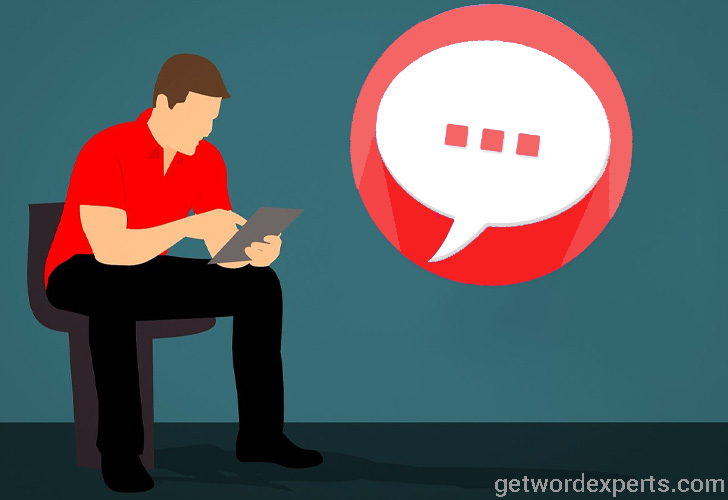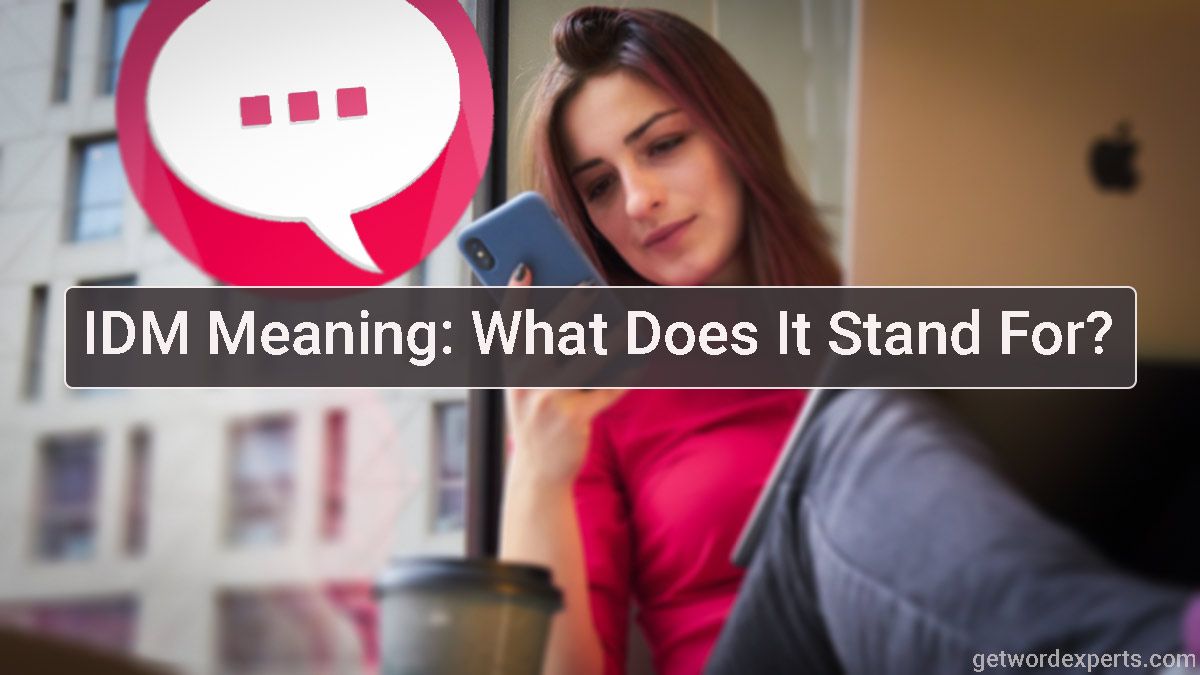Have you ever come across “IDM” in a text and wondered what it means? You’re in the right place! In this post, we’ll explain the IDM meaning in text messages and how this common abbreviation is used in everyday chats. By the time you’re done reading, you’ll have a clear understanding of what “IDM” stands for and when to use it in your own texts. Stick around, and soon you’ll know exactly how to use ‘IDM’ in your own texts like a pro.
IDM Meaning in Texting
In texting, “IDM” means “I don’t mind.” It’s used to convey a relaxed or neutral response to a suggestion or situation. The abbreviation “Idm” is widely used in texting and online conversations. People use it to convey a laid-back or agreeable stance. Teenagers and young adults often use it in social media, chat apps, and messaging platforms. Knowing these abbreviations can make communication faster and clearer.
Using “Idm” can save time and make conversations more fluid. As digital communication evolves, knowing these shortcuts becomes increasingly important. Recognizing and using “Idm” appropriately can help you stay current with modern texting trends. It also helps you understand the tone and context of casual conversations better.
Origin of IDM
“IDM” stands for “I Don’t Mind,” and it’s commonly used in online conversations to express indifference or flexibility.
- The Rise of Abbreviations:
As texting became popular in the late ’90s and early 2000s, people started using abbreviations like “IDM” to save time and stay within character limits. This was part of a broader trend where internet slang and shorthand developed in chat rooms and forums to make communication quicker and easier. - Adoption of “IDM”:
The term gained popularity through casual conversations and social media platforms like Twitter and Facebook. Younger generations, known for quickly adopting new slang, helped spread “IDM” further. - Part of Everyday Language:
Today, “IDM” is used not just in texting but also in casual spoken language, reflecting a laid-back, easygoing attitude in modern communication.
Using “IDM” in Different Scenarios

Casual Conversations
In casual chats, “IDM” helps express a laid-back attitude. Here’s an example:
- Friend: “What’s the plan for tonight? Pizza or burgers?”
You: “IDM if we grab pizza tonight.” - Friend: “Should we go to the park later?”
You: “IDM going to the park.”
Workplace Communication
“IDM” can be used in professional settings to show flexibility. Here’s how it might go:
- Colleague: “Should we go over this today, or would tomorrow be better?”
You: “IDM if we discuss this tomorrow.” - Manager: Does 2 PM work for our meeting?”
You: IDM meeting at 2 PM.
Social Media Interaction
In social media exchanges, “IDM” keeps things friendly and relaxed:
- Friend: “Do you mind if we share this video?”
You: “IDM if we share it.” - Friend: “Should we join the live stream later?”
You: “IDM joining the live stream.”
Online Gaming
Gamers often use ‘IDM’ to express flexibility when making choices.:
- Gamer 1: “Which mode should we play?”
Gamer 2: “IDM playing either mode.” - Teammate: “What role do you want to take?”
You: “IDM taking support.”
“IDM Meaning” in Family Discussions
Even in family chats, “IDM” comes in handy:
- Sibling: “What do you think about going to the museum today?”
You: “IDM visiting the museum.” - Parent:”Want to go out or eat at home?'”
You: “IDM cooking at home.”
In each of these scenarios, “IDM” shows a willingness to go along with others’ preferences. This acronym simplifies communication, making interactions smoother.
Appropriate Times to Use “IDM”

You can use “IDM” in informal conversations with friends or family. It’s a fun, quick way to keep your texts or social media messages casual and lighthearted. However, when communicating in professional settings or with someone in authority, like a supervisor or client, it’s best to stick with the full phrases, “I don’t mind” or “It doesn’t matter,” to maintain professionalism.
Why Do People Use “IDM”?
Abbreviations like ‘IDM’ play a crucial role in today’s fast-moving digital conversations, helping people communicate efficiently and effectively. They allow individuals to convey full ideas or sentiments in just a few characters. For “IDM” specifically, its casual and accommodating tone makes it a favorite in everyday texting and online chats. Whether it’s about letting someone else decide a plan or expressing neutrality, “IDM” saves time and keeps conversations efficient.
Is “IDM” Always a Neutral Response?
While “IDM” often conveys indifference, its meaning can shift based on context and tone. For example, replying “IDM” to a question about dinner plans might seem neutral, but when used in more serious conversations, it could suggest disengagement or a lack of opinion. Understanding the setting and tone is crucial to using it effectively without causing misunderstandings.
Abbreviations vs. Emojis: Which Expresses More?
In the world of texting, abbreviations like “IDM” and emojis often compete for attention. While “IDM” offers clarity in words, emojis add emotion. Consider these examples:
- “IDM 😊” feels more friendly and open.
- “IDM.” might come across as blunt or dismissive.
Using a mix of both can help strike the right tone and avoid confusion.
Different Interpretations of “IDM”
Intelligent Dance Music
In music circles, “IDM” often refers to Intelligent Dance Music, an experimental electronic genre that surfaced in the early 1990s. Unlike mainstream dance music, IDM focuses on intricate, often abstract sounds, prioritizing depth and innovation over typical catchy rhythms. The genre blends complex beats with ambient, atmospheric elements, making it more suited for listening than dancing.
Although IDM isn’t as well-known as other genres, it still holds a loyal fanbase online. If you’re curious about its distinctive style, albums like Selected Ambient Works 85-92 by Aphex Twin or Geogaddi by Boards of Canada offer a great introduction to its soundscapes.
IDM as Internet Download Manager
While “IDM” commonly refers to texting slang like “I Don’t Mind,” in the tech world, it can also stand for Internet Download Manager. This popular software is designed to optimize and accelerate file downloads from the internet. With features like pause, resume, and faster download speeds, it’s favored by users who frequently download large files. Though it’s far removed from the casual messaging context, it’s worth noting that “IDM” can have very different meanings depending on where you encounter it.
Common Misunderstandings Around “IDM Meaning”
Due to its simplicity, “IDM” is sometimes misinterpreted. For instance:
- Someone might genuinely mean they “don’t mind,” but their tone could be read as indifferent or unengaged.
- In group chats, “IDM” can seem dismissive when the intent was to be accommodating.
To avoid confusion, pairing “IDM” with an emoji or further explanation can clarify your meaning.
“IDM Meaning” Across Different Age Groups
The use of ‘IDM’ varies significantly across generations, with younger users often embracing it as casual and friendly, while older users might interpret it differently. Younger audiences, familiar with abbreviations, might see it as casual and friendly. Older individuals, less accustomed to internet slang, could interpret it as overly brief or even impolite. This gap highlights how generational differences influence digital communication styles.
“IDM Meaning” in Different Cultures
Abbreviations like “IDM” may not translate directly across languages or cultures. In English-speaking countries, “IDM” is widely recognized in digital communication. However, similar phrases in other languages might exist but be used differently. This makes “IDM” a uniquely English-centric shorthand, showcasing the quirks of internet slang.
How to Use “IDM” Effectively in Texting
To ensure your “IDM” usage is clear and well-received, consider these tips:
- In professional communication, it’s best to use ‘IDM’ carefully to maintain clarity and avoid being perceived as indifferent.
- Add context or emojis in casual chats to soften the tone, such as “IDM 😊” or “IDM, you decide.”
- Avoid using it alone when clarity is essential—pair it with an explanation if needed.
What Makes “IDM” So Popular?
DM’ has gained popularity for its brevity and versatility, making it a convenient choice in digital interactions.. It turns an entire sentence (“It doesn’t matter”) into a three-letter phrase, making it a perfect fit for today’s fast-paced communication. Its neutral tone makes it versatile, allowing users to convey indifference or flexibility without seeming rude.
Conclusion:
Understanding IDM meaning in text can significantly enhance your online communication skills. This abbreviation is frequently used to express indifference or flexibility, yet its meaning might not always be clear to everyone by knowing what “IDM” stands for, you can engage more confidently in digital conversations. Staying updated with these terms ensures smoother and clearer interactions, helping you navigate the evolving world of online slang with ease. Embrace these insights to enhance your texting experience and avoid any confusion.
Read More About:
WYO Meaning: What Does This Slang Stand For?
Hbu Meaning: What Does It Stand For and How to Use It?
FAQ On IDM Meaning in Texting
What Does Idm Mean In Texting?
IDM stands for “I Don’t Mind. It’s commonly used in texting to indicate that the person has no objections or is fine with a suggestion.
How Is Idm Used In Conversations?
IDM is often used to show agreement or acceptance. For example, “Do you want pizza? ” “IDM. “
Is Idm A Common Abbreviation?
Yes, IDM is commonly used in casual texting and online chats. It helps convey a laid-back attitude quickly.
Can Idm Have Other Meanings?
While IDM commonly means “I Don’t Mind,” it can also stand for “Intelligent Dance Music” in other contexts.

